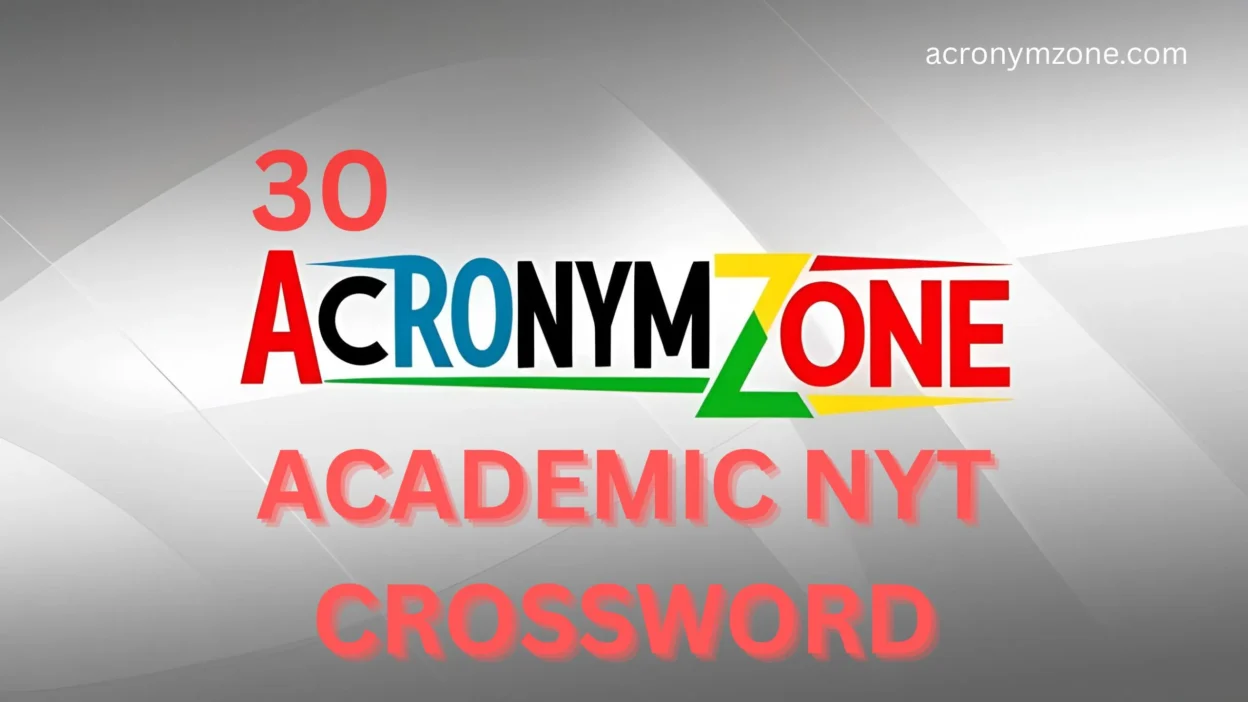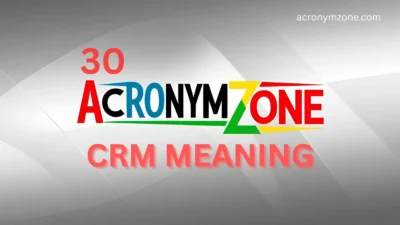If you’re a crossword fan—especially of the New York Times (NYT) variety—you’ve probably stumbled across clues like “Academic acronym” or “University shorthand,” and paused. Why? Because academic acronyms are packed with meaning, yet compact and sometimes confusing if you’re not in the know.
In the world of education, academic acronyms help save space and time—but in puzzles like the NYT Crossword, they also test your cultural literacy, memory, and interpretation skills. This article explores what the term “academic acronym nyt crossword” implies, explains its nuances, and introduces 30 real and puzzle-worthy academic acronyms you may encounter—along with tips on usage, tone, and context.
Whether you’re solving crosswords, writing scholarly content, or just brushing up on education-related terms, this guide will help you better understand and use academic acronyms with clarity and precision.
🧠 What Does “Academic Acronym NYT Crossword” Mean?
In the New York Times Crossword, a clue like “Academic acronym” often points to common educational abbreviations—words shortened to their initials like GPA, SAT, or PhD. These acronyms:
- Appear frequently in university, research, and school contexts.
- Are often part of institutional language.
- Require a mix of general knowledge and cultural awareness.
But more than solving puzzles, understanding these acronyms means recognizing the language of academia—a culture of structure, hierarchy, testing, and achievement.
🎓 30 Academic Acronyms (with Meanings and Usage)
Below are 30 academic acronyms that frequently appear in crosswords and real-world educational contexts. Each comes with a quick definition and example to help you master both the puzzle and the context.
1. GPA – Grade Point Average
Used to measure academic performance.
“She graduated with a 3.9 GPA.”
2. SAT – Scholastic Assessment Test
Standardized college admission exam in the U.S.
“He studied all summer for the SAT.”
3. ACT – American College Testing
Another college entrance exam.
“Some schools accept both SAT and ACT scores.”
4. PhD – Doctor of Philosophy
A terminal academic degree.
“She earned her PhD in biology.”
5. BA – Bachelor of Arts
Undergraduate degree in arts/humanities.
“He has a BA in history.”
6. BS – Bachelor of Science
Undergraduate degree in science/technical fields.
“Her BS is in mechanical engineering.”
7. MA – Master of Arts
Graduate degree in arts or social sciences.
“She pursued an MA in sociology.”
8. MS – Master of Science
Graduate degree in a science-related field.
“He completed his MS in data science.”
9. MBA – Master of Business Administration
Professional graduate degree in business.
“He got his MBA from Harvard.”
10. MD – Doctor of Medicine
Professional medical degree.
“She’s an MD practicing in neurology.”
11. JD – Juris Doctor
Law degree in the U.S.
“He received his JD and passed the bar.”
12. EDU – Education (domain or shorthand)
Often used in URLs and documents.
“Check the university site: www.college.edu.”
13. GRE – Graduate Record Examination
Standardized test for graduate school.
“Most grad programs require the GRE.”
14. TOEFL – Test of English as a Foreign Language
Measures English proficiency for non-native speakers.
“He took the TOEFL before applying to MIT.”
15. IELTS – International English Language Testing System
British-based English proficiency test.
“The UK universities require IELTS scores.”
16. R&D – Research and Development
Common in both academia and industry.
“The lab is known for its R&D excellence.”
17. STEM – Science, Technology, Engineering, Math
A major academic and career focus area.
“STEM careers are in high demand.”
18. MOOC – Massive Open Online Course
Free/affordable online classes.
“He took a MOOC on AI from Stanford.”
19. T.A. – Teaching Assistant
Grad student helping professors teach.
“The TA graded our final papers.”
20. R.A. – Research Assistant
Academic helper in research projects.
“She worked as an RA during her master’s.”
21. LMS – Learning Management System
Online education platforms (like Moodle, Canvas).
“The course materials are on the LMS.”
22. G.E.D. – General Educational Development
Equivalent to a U.S. high school diploma.
“He passed the GED to go to college.”
23. PSAT – Preliminary SAT
Practice version of the SAT.
“Students take the PSAT in 10th grade.”
24. NCAA – National Collegiate Athletic Association
Manages college sports.
“He’s playing under NCAA Division I rules.”
25. FERPA – Family Educational Rights and Privacy Act
Protects student educational records.
“FERPA restricts access to your transcript.”
26. ADA – Americans with Disabilities Act
Relevant for academic accommodations.
“ADA requires equal access for students.”
27. AP – Advanced Placement
College-level courses in high school.
“She took five AP classes last year.”
28. IB – International Baccalaureate
Global high school program.
“IB students must complete an extended essay.”
29. IEP – Individualized Education Program
Special plan for students with disabilities.
“The teacher followed the student’s IEP closely.”
30. FAFSA – Free Application for Federal Student Aid
U.S. form for college financial aid.
“They filled out the FAFSA in January.”
🎯 When to Use Which Acronym
Academic acronyms can appear in writing, conversation, or puzzles, but their tone and formality vary:
- For professional writing (resumes, cover letters): Use formal ones like MBA, PhD, MS.
- For casual conversation: TA, AP, FAFSA are more relatable.
- For crossword solving: Keep an eye out for clues like “Test for college hopefuls (3)” → SAT or “Degree for a doc (2)” → MD.
Also, be culturally aware—some acronyms like GPA or SAT are U.S.-centric, while others like IELTS and IB are global.
✏️ Crossword Strategy Tip
When a puzzle clue says “academic acronym”, ask yourself:
- How many letters is the answer?
- Does the clue suggest a test, degree, or role?
- Is it U.S.-based or international?
- Think of education lingo like TA, GPA, RA, etc.
🧩 Final Thoughts
Academic acronyms may seem intimidating at first, but they’re powerful, practical, and common. Whether you’re reading a university website, writing an academic bio, or filling out a crossword grid, knowing what these abbreviations mean—and when to use them—helps you engage smarter with education and culture.
Next time you see “Academic acronym” in the NYT crossword, you’ll smile—because now, you’ve got 30 solid answers at the ready.




